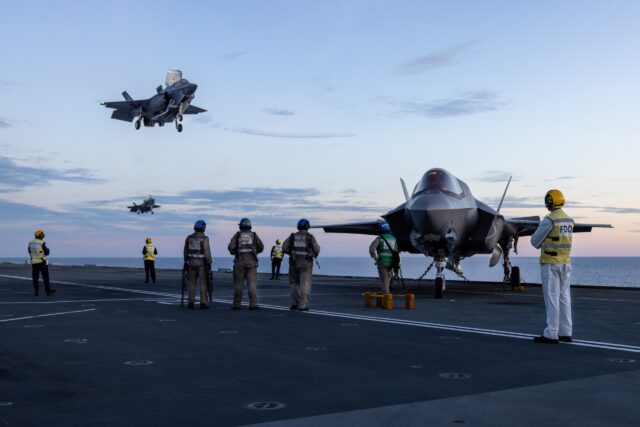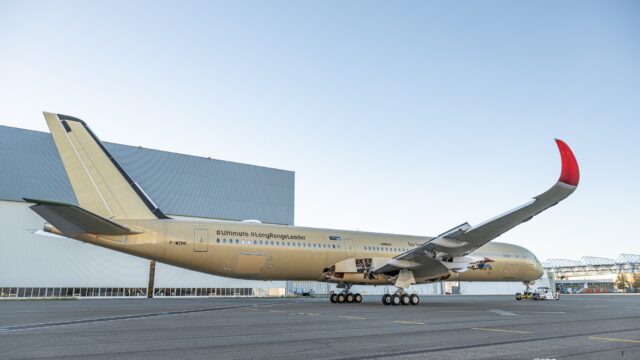How NASA’s King Air is helping scientists measure cosmic radiation from airline flights

October 16, 2025

At 28,000 feet over Greenland, NASA’s B200 King Air became a bridge between two worlds — the one we fly through and the one we dream of exploring.
As instruments aboard the aircraft captured the silent bombardment of cosmic radiation, scientists were mapping dangers not just for airline crews but for future astronauts heading to the Moon and Mars.
NASA studies cosmic radiation over Greenland’s polar skies
In late August, NASA scientists embarked on the Space Weather Aviation Radiation (SWXRAD) flight campaign, transforming the icy airspace over Nuuk, Greenland, into a testbed for space-weather research.
The four-day mission, flown aboard the Beechcraft B200 Super King Air, completed two five-hour sorties to gather dosimetry data; precise measurements of radiation doses absorbed at flight altitudes.
Cosmic radiation, a by-product of high-energy particles from the Sun and distant supernovae, constantly bombards Earth. While the planet’s magnetic field shields most of it, the protection weakens near the poles.

“The radiation exposure is maximum at the poles and minimum at the equator because of the effect of Earth’s magnetic field,” explained Chris Mertens, principal investigator of SWXRAD at NASA’s Langley Research Center. “Greenland is a region where the shielding of cosmic radiation by Earth’s magnetic field is zero.”
That makes polar routes, used by long-haul commercial flights between North America, Europe and Asia, an ideal environment for studying how much cosmic radiation air travellers actually experience.
How cosmic radiation exposure affects aircrew and passengers
Cosmic radiation consists of high-energy charged particles streaming through space from the Sun and distant stars. When these particles collide with atoms in Earth’s upper atmosphere, they produce a cascade of secondary particles that can reach flight altitudes, and occasionally even the ground.
Unlike ultraviolet rays from the Sun, which are lower-energy and non-ionising, cosmic radiation is ionising, meaning it carries enough energy to alter atoms and molecules.

At higher altitudes, where the air is thinner and Earth’s magnetic shield weaker, exposure increases sharply. For most people, the dose is tiny: in the United States, the average annual exposure from cosmic radiation is about 0.33 millisieverts (mSv), roughly equal to three chest X-rays.
But for airline crews, frequent flyers and astronauts, that exposure accumulates. Understanding how and where cosmic radiation builds up in the atmosphere is key to keeping both travellers and future space explorers safe.
NASA validates global space weather and radiation models
The Greenland flights were designed to enhance and validate NASA’s Nowcast of Aerospace Ionising Radiation System (NAIRAS), a sophisticated model that generates real-time global maps of radiation levels in Earth’s atmosphere.
By comparing fresh airborne measurements with NAIRAS predictions, scientists can fine-tune how the model interprets data from ground-based neutron monitors, spaceborne instruments and solar-wind detectors.

“If the new data doesn’t agree, we have to go back and look at why that is,” said Mertens. “One of the biggest uncertainties in the radiation environment is the effect of Earth’s magnetic field. This mission eliminates that variable, allowing us to focus on how particles from space actually interact with the atmosphere.”
The data collected aboard the B200 will now undergo months of quality checks, modelling comparisons and validation studies. Once integrated, it will make NAIRAS more accurate for both aviation safety and deep-space mission planning.
From aviation safety to Artemis: NASA prepares for radiation risks in space
Though designed with air travel in mind, SWXRAD’s findings reach much further. As NASA’s Artemis programme prepares for lunar missions and eventual crewed expeditions to Mars, understanding and predicting radiation exposure becomes a life-support issue.
“With NASA spacecraft and astronauts exploring the Moon, Mars and beyond, we support critical research to understand and ultimately predict the impacts of space weather across the solar system,” said Jamie Favors, Director of NASA’s Space Weather Program at NASA Headquarters. “Though this project is focused on aviation applications on Earth, NAIRAS could be part of the next generation of tools supporting Artemis and human missions to Mars.”
During interplanetary travel, astronauts will face periods where no direct radiation data exists. Models like NAIRAS, fed by high-latitude flight data from Earth, will provide predictive shielding estimates for spacecraft and habitats.
“We’re thinking about what data humans will need to take with them,” added Favors. “This model is thinking about Mars the same way it’s thinking about Earth.”
The aircraft behind the mission: NASA’s B200 Super King Air
NASA’s Beechcraft B200 Super King Air (tail number N801NA) is a versatile twin-turboprop that serves as both a research platform and a pilot-proficiency aircraft.
Operated by NASA’s Armstrong Flight Research Center in California, it is equipped with modular racks, nadir and zenith ports, and specialised mounts for sensors, radars and camera systems.

First acquired by NASA in the early 1980s, the B200 has supported missions ranging from ocean-dynamics studies and radar mapping to atmospheric research. Its reliability and 1,800-nautical-mile range make it ideal for airborne science campaigns like SWXRAD, which demand long-duration, stable flight at high altitudes.
In previous campaigns, the same aircraft has flown for NASA’s Signals of Opportunity Synthetic Aperture Radar (SoOpSAR) and the Sub-Mesoscale Ocean Dynamics Experiment (S-MODE), both of which used advanced sensors to study Earth’s land and ocean systems.
Building a radiation roadmap from Earth to Mars
The Greenland mission underscores how NASA’s research aircraft often bridge planetary boundaries — gathering data in Earth’s skies that will eventually shape the safety of human exploration in deep space.
By measuring how cosmic radiation behaves in polar airspace, NASA is refining not only its space-weather models but also its strategies for shielding astronauts from the harsh radiation environment beyond Earth’s magnetic field.
For now, the SWXRAD team is back at NASA Langley, poring over terabytes of Arctic flight data. Yet the ultimate goal stretches far beyond Greenland’s icy horizon — toward a future where humans can fly through both Earth’s skies and interplanetary space with equal confidence.
Featured image: NASA
















